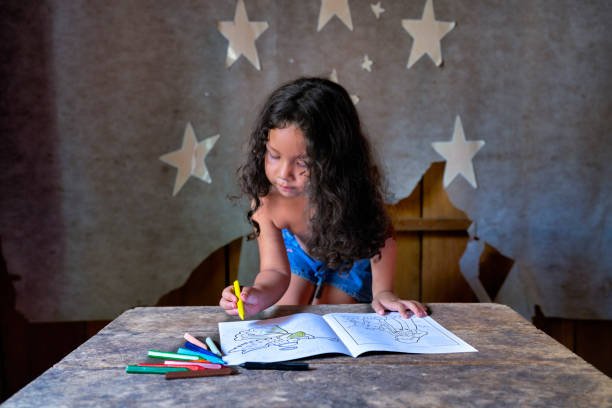Can Aboriginal Memory Methods Improve Modern Learning?
The rapid pace of change in education and knowledge retention strategies has sparked renewed interest in the intersection of traditional wisdom and modern science. Indigenous cultures, particularly Australian Aboriginals, have developed sophisticated methods of encoding, retaining, and recalling knowledge that have been honed over millennia. These Aboriginal memory technique can offer profound insights into how modern learning strategies might be improved.
The Foundations of Aboriginal Memory Techniques
Aboriginal memory techniques stem from an oral tradition in which knowledge is passed down through generations without the aid of written records. Aboriginal people have relied on mnemonic devices embedded in storytelling, songs, dance, and visual art to preserve critical information about their culture, environment, and history. These methods emphasize experiential and contextual learning, aligning the retention of knowledge with real-world experience.
One of the most famous aspects of Aboriginal culture is the use of “songlines,” pathways across the land where each geographical feature corresponds to a part of a song that encodes tribal stories, cultural values, and survival strategies. This approach shows that the environment and narrative structure act as cognitive cues, allowing the retrieval of extensive amounts of data with relative ease. Such techniques promote an embodied learning process, in which memory and movement are intertwined.
Songlines: Mapping Memory to the Land
A key feature of Aboriginal memory systems is the use of songlines or “dreaming tracks.” These songlines are essentially oral maps that weave together geographic locations, stories, and essential cultural knowledge. When traversing the landscape, Aboriginal people recite these songs, which act as mnemonics for navigating their environment and remembering complex information about survival, such as the locations of water sources and hunting grounds.
Each physical location along the songline is linked to specific stories, songs, and symbols, helping Aboriginal people remember vast amounts of data that would otherwise be difficult to retain. This technique capitalizes on spatial memory, the human brain’s innate ability to associate information with physical locations.
This method is particularly intriguing for modern learners because it offers an alternative to rote memorization. By connecting knowledge to a journey, whether mental or physical, learners can create stronger associations, making it easier to recall information when needed. For example, educators today could use virtual or real-world environments to create “learning pathways” where students associate specific content with different physical or digital spaces.
The Science Behind Aboriginal Memory Techniques
Recent scientific studies have begun to explore the potential applications of Aboriginal memory techniques in modern learning environments. Research suggests that these techniques align with several principles of cognitive psychology, particularly the role of multisensory learning, spatial memory, and narrative structure in memory retention.
Multisensory Learning
Aboriginal memory techniques often engage multiple senses simultaneously. Songs, dances, and visual symbols are all used to reinforce knowledge, creating a rich, multisensory experience. Cognitive science has shown that learning involving multiple senses is more effective than learning that is purely visual or auditory. The brain creates stronger neural connections when multiple sensory inputs are activated during the learning process, leading to better recall and understanding.
This insight can be applied in modern classrooms by integrating more multisensory activities into the learning process. For instance, combining verbal instruction with visual aids, movement, and even touch could enhance memory retention and comprehension. This idea aligns with contemporary educational practices such as experiential learning, project-based learning, and gamification, all of which seek to create a more immersive, engaging learning experience.
Spatial Memory and the Method of Loci
One of the core components of Aboriginal memory techniques is the use of spatial memory. The brain has an innate ability to remember locations and associate information with those places, a phenomenon known as the method of loci or memory palace technique. In this approach, individuals mentally “place” pieces of information along a familiar route or within an imagined environment. When they want to recall that information, they mentally walk through the space and retrieve it.
This technique is not exclusive to Aboriginal cultures but has been used in various ancient societies, including the Greeks and Romans. However, Aboriginal people have refined and embedded this method into their culture to an extraordinary degree. Their use of actual landscapes as memory aids offers an added layer of depth, making the information even more accessible because it is anchored to the real world.
The method of loci has already found its way into modern memory training programs. Memory champions often use this technique to memorize large amounts of information, such as the order of cards in a deck. Integrating such spatial memory techniques into mainstream education could revolutionize how students study and retain information, especially in subjects that require memorization of facts or processes.
Narrative Structure and Storytelling
Another hallmark of Aboriginal memory techniques is the use of narrative. Aboriginal people have long employed stories to encode complex information. These stories are often rich in symbolism and metaphor, which aids in memory retention by creating emotional connections with the content.
Modern cognitive science supports this approach, showing that stories are easier to remember than isolated facts. When information is presented in a narrative structure, it becomes more meaningful and easier to recall because the human brain is wired to process and remember stories. This is why storytelling is a powerful educational tool. It taps into an intrinsic human ability to follow and retain information within a narrative context.
Incorporating storytelling into modern education can make lessons more engaging and memorable. Teachers can present academic concepts through narratives, transforming dry material into captivating stories. For example, a history lesson can be framed as a series of stories about key figures, events, and challenges, making the information more relatable and easier to remember.
Application of Aboriginal Memory Techniques in Modern Learning
Incorporating Aboriginal memory techniques into contemporary education may enhance various aspects of learning, including information retention, critical thinking, and creativity. These techniques could be particularly beneficial in several key areas:
Enhancing Memory in Students
Modern education often emphasizes rote memorization, which can be tedious and ineffective for long-term retention. Aboriginal memory techniques, such as using spatial memory and storytelling, offer a more natural and enjoyable way to remember information. Educators could adopt methods like the method of loci, creating “memory journeys” for students, where key concepts are associated with different points in a classroom or even in virtual environments.
For example, in learning vocabulary, students could create a memory palace where each word is associated with a different location in their home or school. Revisiting these mental spaces during review would make it easier to recall the words and their meanings.
Developing Critical Thinking and Problem-Solving Skills
Aboriginal memory techniques encourage learners to make connections between different pieces of information and to see knowledge as part of an interconnected web rather than a series of isolated facts. This holistic approach could foster critical thinking and problem-solving skills, as students would be encouraged to think about how different concepts relate to one another.
For instance, in science education, students could be encouraged to map out how various scientific principles interact, using visual or narrative techniques to make these connections more explicit. This would help them understand not just the facts but the underlying principles that connect them.
Cultivating Creativity and Innovation
The use of symbols, stories, and songs in Aboriginal memory techniques fosters creativity and imagination. By encouraging students to create their own mnemonic devices, educators could promote creative thinking and innovation. Students could be asked to invent their own stories, songs, or symbols to help them remember complex information, turning learning into a more engaging and imaginative process.
Additionally, using visual art as a memory aid could help students develop their visual thinking skills. Art is often underutilized in education, but it has the potential to enhance memory and creativity by encouraging students to think about knowledge in new and visually rich ways.
Promoting Lifelong Learning
Because Aboriginal memory techniques emphasize the connection between knowledge and real-world experience, they promote a form of learning that is continuous and relevant throughout life. In contrast to modern education systems, which often focus on cramming information for tests, Aboriginal methods prioritize the retention of practical knowledge that can be applied in everyday life.
By integrating these techniques into modern education, we could help students develop a love of learning that extends beyond the classroom. Instead of seeing education as something that ends when they leave school, students would be encouraged to see it as a lifelong process of discovery and growth.
Challenges and Considerations
While Aboriginal memory techniques offer exciting possibilities for enhancing modern learning, there are also challenges and considerations to keep in mind. These techniques are deeply rooted in the cultural and environmental context of Aboriginal life, and it may not be possible to fully replicate them in different settings without losing some of their richness.
Cultural sensitivity is essential when borrowing techniques from Indigenous traditions. It’s important to respect the cultural significance of these practices and to avoid appropriating them in ways that strip them of their original meaning. Collaboration with Aboriginal communities and educators could help ensure that these techniques are integrated into modern education in a way that is both respectful and effective.
Additionally, while Aboriginal memory techniques can be incredibly effective, they may not be suitable for all learners or subjects. Some students may struggle with the abstract or creative elements of these methods, while others may find them incredibly empowering. It’s important for educators to consider the diversity of learning styles and preferences when incorporating these techniques into the classroom.
Conclusion
The rich tradition of Aboriginal memory techniques offers a fascinating and potentially transformative approach to modern learning. By incorporating elements such as spatial memory, storytelling, and multisensory learning, educators can create more engaging, effective, and enjoyable learning experiences. While there are challenges to consider, the potential benefits of integrating these ancient techniques into contemporary education are profound. They offer not only new ways to improve memory and comprehension but also opportunities to foster creativity, critical thinking, and a lifelong love of learning.
click Here to visit the website






